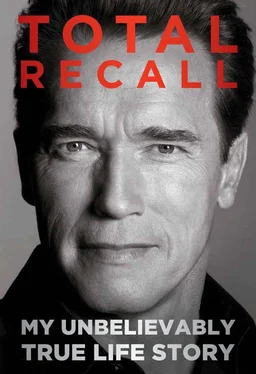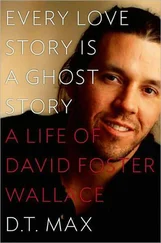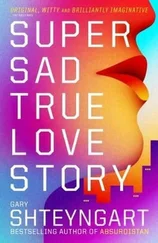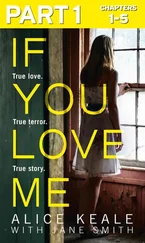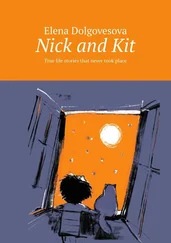This was a much bigger version of the claustrophobia I fought when I was having face and body masks made to play the Terminator or Mr. Freeze in Batman and Robin . For me, Stan Winston’s special-effects studio was torture. To make the masks, they need a mold, and to make the mold, they place these huge, heavy casts on your head. A lot of actors hate it, so Stan and his helpers have a whole routine.
When you first arrive, the music is on, everyone is happy and welcoming, “Yay, it’s good to have you here!” Then they sit you down and say, “This is going to be a little challenging. Are you claustrophobic?”
“Nah,” I’d always answer, trying to play ballsy.
So they start wrapping you with strips of fabric dipped in cement. Soon your eyes are covered, and you can’t see anything. Then your ears are closed, and you can no longer hear. One by one, all your senses are shut off. Now your mouth is sealed, so you can no longer talk. Finally, they cover your nose, except for two little straws poking out of your nostrils to let you breathe.
You have to wait maybe a half hour for the cast to set. The mind starts to play tricks. What if you can’t get enough air? What if a little bit of cement gets in one of the straws and blocks off a nostril? Because they’ve had so many actors freak out, they try to keep things light with the music and casual conversation. After you can’t hear anymore, you still feel them moving around you as they’re applying the wrap. They tell you ahead of time that if you feel you are really flipping out, “I’m right here. Just signal with your hand or tap me on the arm.”
After awhile the real fear sets in. You feel the cast getting hard, which means it’s no longer possible to just rip it off your head. Now it will have to be cut. You noticed the tools when you sat down—the little electric circular saw they use to cut off casts—but you didn’t ask enough questions when you had the chance.
So now you’re thinking, “Wait a minute. How do they know how deep to cut? What if that saw slices into my face?”
The first time I went through this, I worried so much about the saw that I started hyperventilating. I couldn’t get enough air through my straws, and I started feeling really freaked. I tried to calm down. “Stop thinking about that, stop visualizing that saw,” I ordered myself. “Push it out of your mind … Yeah, okay, I’ve got it out of my mind now. Okay, now let’s think about something else. Maybe I should think about the ocean. Maybe I should think about a great forest, something pleasant; maybe birds chirping and leaves rustling in the wind and in the distance people working and the sound of a … chainsaw!” And I’d be anxious again. Of course, by this time, the attendants had disappeared. Maybe not out of the room, but I didn’t know where they were. Maybe they’d told me, “Okay, just ten more minutes,” but I couldn’t hear. I was locked in. There was no one around. And so I was just kind of hoping for the best.
Surgery reminded me of that.
Maria was so frightened to get a call from Dr. Starnes at four o’clock in the morning that she telephoned her friend Roberta and asked her to come with her to the hospital. Roberta Hollander, a CBS news producer, had been like a sister to Maria when she first got in front of the camera—a strong leader and tough broad who really knew how to deal with people. A few hours later, she and Maria sat in Dr. Starnes’s office as I went back under the knife. He had a huge monitor in his office that let him see and hear what was going on in the operating room because there were parts of the procedure, like taking the patient off the heart-lung machine, that he didn’t perform. He’d go back to his office, see other patients and hold his meetings, keeping track in case he was needed. Maria told me later that she looked away many times. She couldn’t watch when they cut open my chest, used surgical pliers to undo the wires holding together my rib cage from the first operation, and exposed the heart. But Roberta pulled her chair right up to the screen. “Did you see that?” she said. “They just cut the aorta, and they’re stitching in the new valve!”
So I got a second or third lease on life, depending on how you count it. I woke up from the surgery and discovered Roberta there with Maria, giving moral support. Again I felt good. The painful coughing was gone. I could breathe. “Amazing!” I said. “This is great! When did the doctor say I could go home?”
We’d found an Austrian guy in the hospital kitchen who knew how to fix Wiener schnitzel, and the first two days I had that. It tasted delicious. But on the third day, when the attendant came in with the food, I said, “Can you please take that away? I cannot stand the smell.” It smelled like rotting garbage.
From that point on, I could only stomach ice cream and fruit. Everything smelled bad. I lost my sense of taste. I hated everything they put in front of me and began to feel really low.
The doctor had warned that open-heart surgery often leaves people depressed. But after what we’d just been through, Maria was very concerned. “This isn’t like you,” she said. When a couple of days passed, and I didn’t bounce back emotionally, she thought that the doctors were being too blasé. “You’ve got to do something,” she told them. “We can’t have him like that. When I come back tomorrow, you’d better have him cheery.”
The residents had the idea of sneaking me a cigar, because they knew I love stogies. They thought that would really do it. There was an area on the roof where they could shoot baskets to unwind, and they brought me up there to smoke. Little did they realize that I had no sense of taste and that I hated everything. I put the cigar in my mouth and almost threw up. “No, thank you, I just can’t,” I said. I ended up sitting in the wheelchair watching them play basketball, like a character in One Flew Over the Cuckoo’s Nest . I was just staring. I didn’t even know what I saw, just bodies jumping around. There was nothing in it for me, that was for sure. Eventually they wheeled me back down to the room. I did feel a little bit better, I guess, to be outdoors a bit.
Eventually I came around, especially after I got home. I played with the kids and little by little started working out in the gym. Not bench presses, of course, but riding the Lifecycle a little and afterward walking up the hill to Will Rogers Park with Conan and Strudel, our black Lab that Franco gave me on one of my birthdays. A little later I could go back to weights, but heavy training was out of the question from now on because it would put pressure on the valve. No forcing, no struggling, the doctor said. Not ever again.
I never realized how badly the news of my surgery was going to hurt me in Hollywood. We announced it because word had started to circulate anyway, and it would have seemed suspicious not to tell the public. Immediately I got phone calls from executives at the studios I’d been working with. “Don’t worry about the script,” they said. “We are going to hold it for you. Just take care of yourself and feel better. And as soon as you’re ready, let us know.”
I should have known it was not that simple. The more you promote yourself as the ultimate action hero, and the more you advertise how fit you are and how you do the riding, jumping, and fighting yourself, people form a larger-than-life perception of you. They see you as an actual action figure, not just some guy in a costume on the screen. And the heart symbolizes it all. It’s the center of the body, the physicality. It’s the foundation of courage and will. The heart is emotion too—it’s love and passion and compassion. Heart, heart, heart, heart, it’s the center of everything.
Читать дальше
